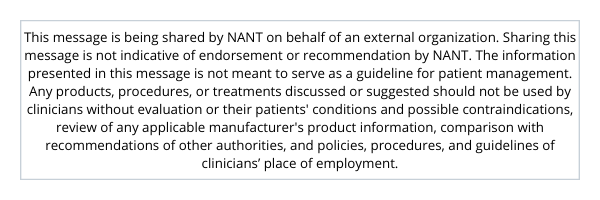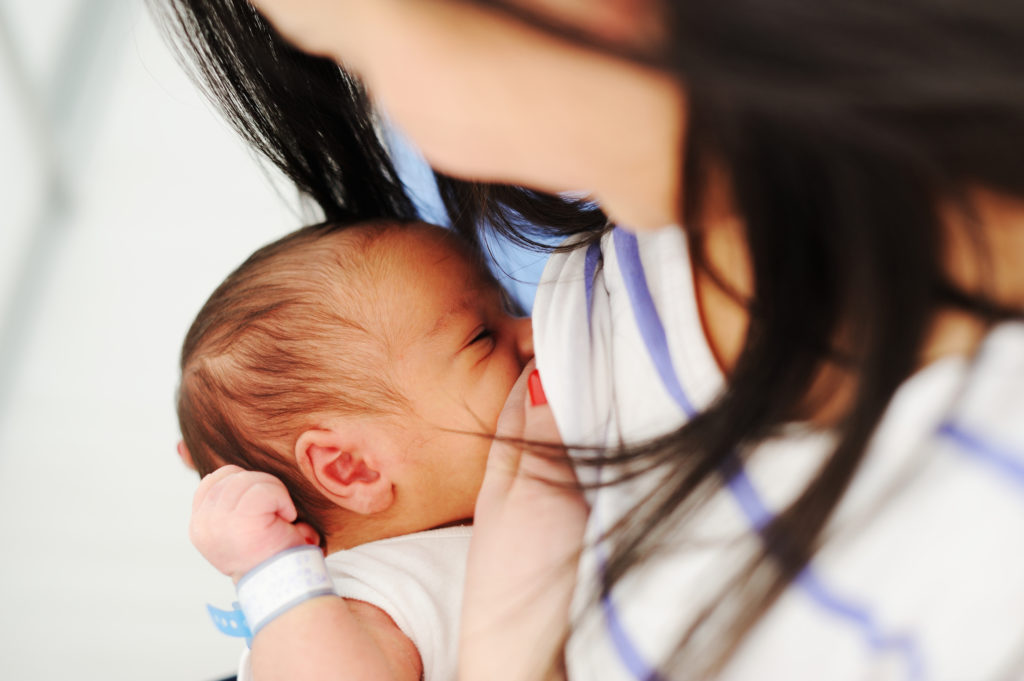In honor of Breastfeeding Awareness Month, we felt this topic would speak to the heart of some neonatal therapists. We know there is a plethora of evidence supporting the incredible outcomes NICU infants receive by breastfeeding, in addition to the positive effects it has on the mother’s health, bonding, and long-term quality-of-life for the entire family.
Amazing things happen when we get babies to breastfeed, so how do neonatal therapists get in on the action to help support this powerful interaction and promote better outcomes? Do we sit back and let the Lactation Consultants have all the fun? Not at all! Neonatal therapists can play a powerful role in these infants’ successes at breast by promoting pre-feeding oral motor stimulation programs in their units.
Decades of literature have supported oral motor stimulation to improve later feeding outcomes on bottles (see recent review by Chen et al., 2021), and recently there have been an increase in studies demonstrating the importance of non-nutritive suck development on an infant’s ability to feed by breast. Did you know your therapy could positively influence infants’ breastfeeding rates at discharge (Bache et al., 2014; Fucile et al., 2018), at 3- and 6-months post discharge (Pimenta et al., 2008), and LATCH scores (Topkar et al., 2020)? Emphasizing the value of your therapy to your lactation consultants and neonatal team members allows you the opportunity to significantly contribute to the team’s shared goals.
Not only is this practice supported by evidence, but the rationale for its implementation makes sense when you think about it in terms of what would be “normal” for this infant. If the infant wasn’t born preterm, they would be receiving nothing but pleasurable oral stimulation in the womb, and would be sucking and swallowing the amniotic fluid surrounding them when awake. This practice in the womb helps wire their neural networks for nutritive sucking after birth. But our preterm infants do not get these pleasurable, brain-building experiences, and are left with underdeveloped neural wiring and inefficient oral feedings. Therapists can help bridge this gap by offering infants pleasurable oral motor experiences and non-nutritive sucking stimulation to mimic the training they would have had in the womb. The stimulation develops the neural pathways in-time with development, so when they are ready to feed by mouth, they demonstrate more gestationally appropriate oral movements, leading to better success at breast and bottle feedings.
Borrowing the famed phrase “neurons that fire together wire together” to emphasize the importance of consistency when aiming to build neurological networks. When offering oral stimulation, we urge therapists to be cognizant of their movements, rhythms, and pressures, because these inconsistencies will lead to less efficient neural development. We know this through the years of foundational research investigating the therapeutic, frequency-modulated, pneumatic pulses offered by the NTrainer System. Using neuroimaging techniques, studies run by Dr. Steven Barlow and his team have found that variations in the rate, rhythm, and strength of pulses/movements within an oral stimulation therapy can affect the brain differently, both short and long-term. Even little details such as the geometry, stiffness and texture of the pacifier used for stimulation have been proven to have a different effect on the way the brain is wired (see Barlow and colleagues (2021) for a review of this literature). Therefore, therapy teams are encouraged to work together to ensure each therapist is offering the stimulation the same way, every time, for every baby.

An increasing number of NICUs have reported excellent breastfeeding success when using the NTrainer System to provide oral motor stimulation therapy to their preemie and medically complex populations. In fact, some NTrainer users have already begun to collaborate with their nurses and lactation team to use the NTrainer to stimulate the infant’s oral musculature during kangaroo-care, and immediately before putting them to latch on Mom’s breast. These users have expressed a preference for the NTrainer’s ability to provide consistent therapy for the Neonatal Therapists to use, as well as nurses, lactation consultants, and even parents! (Zimmerman & Thompson, 2018). What’s more, exciting evidence is on the way from the Neonatal Medical-Research Team at Santa Clara Medical Center in California, who are currently re-analyzing data collected for a prior study (Song et al., 2019), to objectify the breastfeeding rates and LATCH scores of their breastfeeding infants who received the NTrainer, compared to those who did not. Early analyses suggest the NTrainer has a positive effect on breastfeeding, but more details will be released with the publication next year!
Helping infants breastfeed is a unit-wide goal, so get-in on the action by sharing this information with your lactation consultants and medical team to establish a pre-feeding oral motor stimulation program in your unit. Your role as Neonatal therapists is a powerful one! Take every opportunity to advance your practice and improve your interprofessional team, so you can positively influence the outcomes of the beautiful infants and families you work with.
For more information on the NTrainer System, go to www.innarahealth.com or email Chris Mathia at cmathia@innarahealth.com.
References:
Bache, M., Pizon, E., Jacobs, J., Vaillant, M., & Lecomte, A. (2014). Effects of pre-feeding oral stimulation on oral feeding in preterm infants: a randomized clinical trial. Early human development, 90(3), 125-129.
Barlow SM, Rosner A, Song D. (2021). CH 29. Feeding and Brain Development in Preterm Infants: Role of Sensory Stimulation. In Govindaswami B (Editor). Practical Approaches to Newborn Care: A Global Perspective in the Age of Information. New Delhi; Jaypee Brothers Medical Publishers: pp. 264-274.
Chen, D., Yang, Z., Chen, C., & Wang, P. (2021). Effect of Oral Motor Intervention on Oral Feeding in Preterm Infants: A Systematic Review and Meta-Analysis. American Journal of Speech-Language Pathology, 1-11.
Fucile, S., Milutinov, M., Timmons, K., & Dow, K. (2018). Oral sensorimotor intervention enhances breastfeeding establishment in preterm infants. Breastfeeding Medicine, 13(7), 473-478.
Pimenta, H. P., Moreira, M. E., Rocha, A. D., Gomes Junior, S. C., Pinto, L. W., & Lucena, S. L. (2008). Effects of non-nutritive sucking and oral stimulation on breastfeeding rates for preterm, low birth weight infants: a randomized clinical trial. Jornal de pediatria, 84, 423-427.
Song, D., Jegatheesan, P., Nafday, S., Ahmad, K. A., Nedrelow, J., Wearden, M., … & Govindaswami, B. (2019). Patterned frequency-modulated oral stimulation in preterm infants: a multicenter randomized controlled trial. PloS one, 14(2), e0212675.https://www.ncbi.nlm.nih.gov/pubmed/30817764.
Topkar, P., Metgud, D., & Machakanur, V. (2019). Effect of follow-up home-based oromotor stimulation on breastfeeding performance in preterm low-birth-weight infants: A randomized control trial. Indian Journal of Health Sciences and Biomedical Research (KLEU), 12(1), 85.
Zimmerman, E., & Thompson, K. (2018). The Evidence Surrounding Recent Technologies Used in Neonatal Intensive Care Units to Assess and Treat Feeding Development in Premature Infants. Perspectives of the ASHA Special Interest Groups, 3(13), 157-171.


